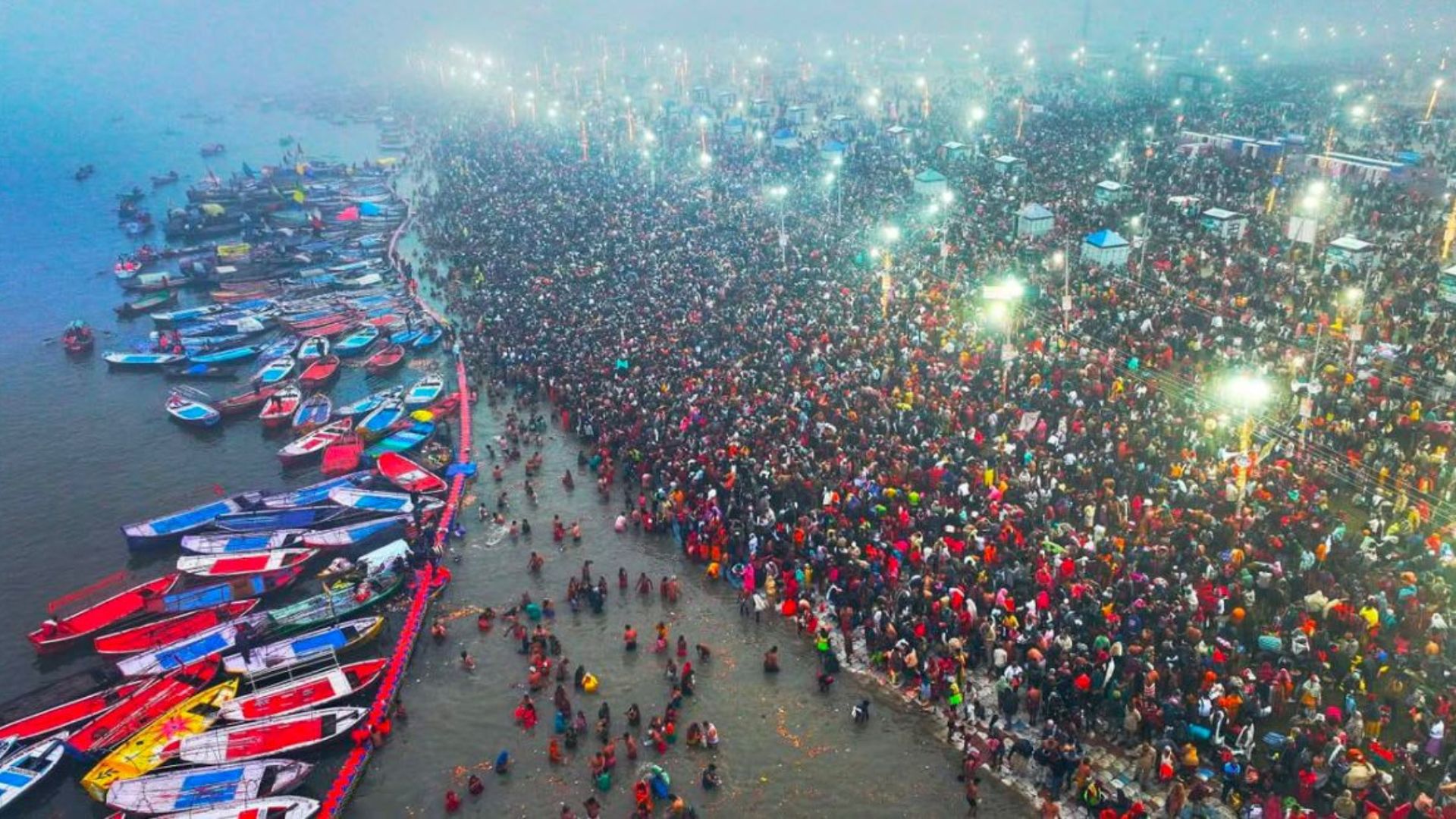Practical theories suggest that the river Saraswati dried up because of climate change and geological factors.
A sacred tradition of over 2,000 years, the Kumbh Mela has survived the onslaught of the invaders, be it the Mughals or British, and has continued into a free India since 1947. Believers, sadhus, holy men, ascetics from all over India gather at the Kumbh Mela, to have a bath at the confluence of three rivers to get blessed and wash off their sins.
The Hindu myth goes back to the story of the Asuras and Devas churning the ocean for the eternal nectar. They used Mount Mandar as a churning rod and Vasuki, the king of snakes as the churning rope, to churn the ocean for nectar. Under Lord Vishnu’s instruction, the Devas held the tail and Asuras held its head, spitting
The churning of the ocean brought up wonderful treasures on land like Chandra the moon, Parijat the fragrant tree, the four tusked elephant of Lord Indra, Madara goddess of wine, Kalpabriksha the wish fulfilling tree, Apsaras the celestial dancers and the celestial horse, Uchchaihshrava, Goddess Lakshmi, Panchajanya Vishnu’s conch, Vishnu’s bow and mace, Dhanvantari who rose up carrying the Amrita, supreme treasure in his hands.
The nectar was swallowed by the Devas but in the tussle with the Asuras, four drops fell on earth, in four different places—Prayagraj, Haridwar, Trimbak [Nasik] and Ujjain. The rivers flowing through these places are said to possess mystical power and spiritual value and a Kumbha Mela is celebrated there every 12 years. The belief is that bathing in these rivers during Kumbh Mela can lead to Moksha—release from the cycle of rebirth and death.
The 2025 Kumbh Mela is taking place in Prayagraj, at the confluence of the holy rivers of Ganga, Yamuna and the mythical Saraswati. The story of the Saraswati river, which does not exist in the physical form now, has several interpretations. This river is supposed to represent all the qualities of Goddess Saraswati, that is enlightenment and divine wisdom. The river is mentioned in the Rig Veda, Mahabharata and the Puranas.
The Mahabharata was fought on the banks of the Saraswati and Parashuram bathed in it. According to the experts, the Saraswati originated from Har ki Dun glacier in Garhwal in Uttarakhand. It is believed that it flowed between 6,000 and 4,000 BC. The river’s disappearance is seen as a transition from the physical to the metaphysical, highlighting the importance of inner knowledge and wisdom. Practical theories suggest that the river gradually dried up because of climate change and geological factors. The belief is the river still flows underground.
The Kumbh covers a whole spectrum of spiritual and religious activities, including spiritual talks, colourful processions, sadhus singing soul stirring devotional music, discussions based on religious topics, mass feeding of the poor, the traditional procession of the Akharas called Peshwai on elephant back, horses and chariots. Naga sadhus’ sword rituals and many other activities attract millions.
The Shahi Snan dates for the Kumbh Mela are: Paush Purnima (13 January) Maha Sankranti (14 January), Mauni Amavasya (29 January), Basant Panchami (3 February), Maghi Purnima (12 February), Maha Shivaratri (26 February).

